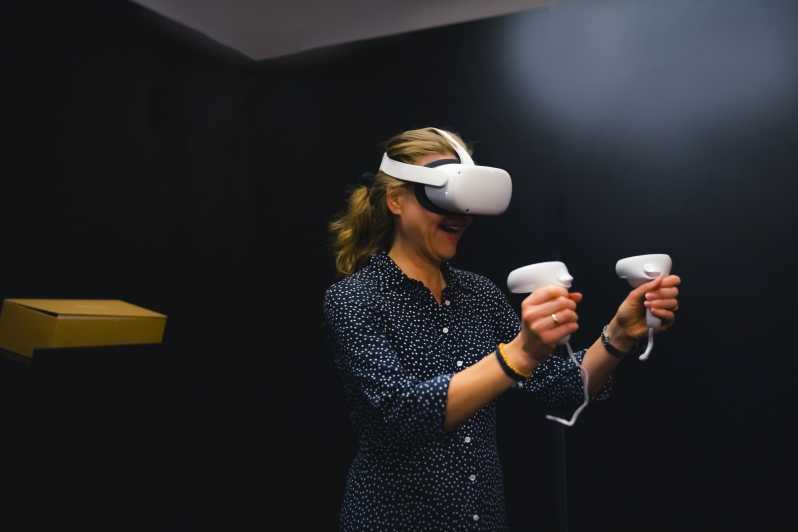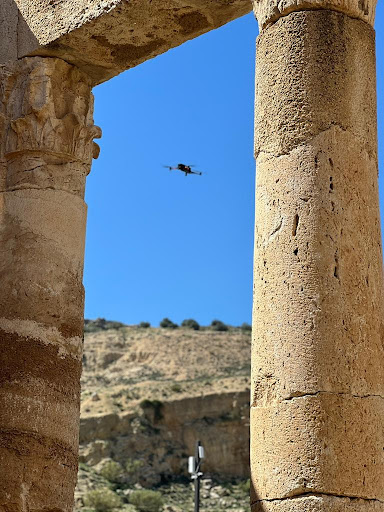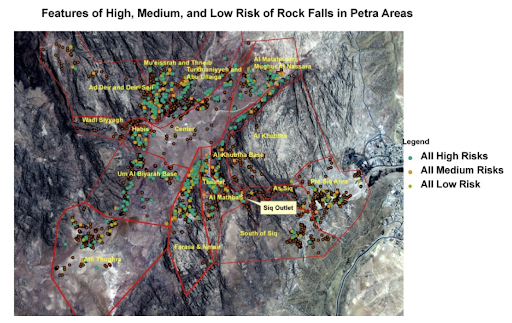Jordan's heritage goes virtual: Calls to monetize relics
With the help of novel 2D and 3D imaging technology, organizations are digitizing landmarks in Jordan, enabling tourists to tour Petra remotely with virtual reality and researchers to better restore historic monuments.
France, South Korea, Australia and other countries have digitized their landmarks. As governments across the world are collaborating with tech companies, the Jordanian government is figuring out how to maintain ownership of its historic locations as they become digitized.
With thousands of archaeological sites, including 37 castles and fortresses, virtual reality may be crucial in promoting lesser-known landmarks in Jordan.
- Organizations seeking to educate the public turn physical landmarks into virtual reality -
iHERITAGE, a project funded by the European Union, aims to turn sites in Jordan into virtual reality experiences.
Firas Khlaifat runs Jordan Heritage, a non-profit that owns a virtual reality museum, restaurants and other ventures that seek to document Jordanian history and culture.

At the Virtual Reality Museum in Aqaba, Jordan, visitors put on headsets and discover heritage sites. Photo provided by Jordan Heritage.
Khlaifat tells Roya News that Jordan Heritage’s Virtual Reality Museum does not replace visiting sites in person.
At the museum, visitors enter booths equipped with sound effects and carpets that change density as they walk in virtual space.
“First and foremost, we want people to be entertained,” Khlaifat notes. “We want technology to bridge the gap between heritage and the youth, between heritage and the elderly.”
“What we’re doing is a mix between art, sociology, culture,” Khlaifat adds. “We’re open to any collaboration.”
- New technologies developed to digitize landmarks; companies hope to monetize historic sites -


A drone captures images that will later be compiled into augmented reality models. Photos provided by ASFAN.
Yousef Alhussiny, a senior VR developer at ASFAN, tells Roya News that he hopes the models ASFAN makes will promote lesser-known locations in Jordan.
ASFAN is a technology company based in Amman that has digitized castles in Jordan and underground cave systems.
Alhussiny hopes to leverage a new era of technology, using audio recordings of locals telling stories, 3D models and digital reconstructions to provide a unique, multimodal experience.
He is working on building new technologies to enable users to access the 3D models online — which he hopes can be used in the future to change the way augmented reality experiences are presented and shared.
In a portal linked to ASFAN’s website, users can select a location and explore it.

A 3D model ASFAN made of the caves of Iraq al-Amir located just outside of Amman, Jordan.
Alhussiny hopes that virtual and augmented reality will give users a perspective into what it was like to live in historic locations when they were in use.
Alhussiny tells Roya News that augmented reality is the “next step” of technology. He added there has been little innovation in the development of computers and monitors, “and VR allows us to have a higher field of view.”
- Researchers are mapping Petra, creating models that aid in conservation efforts -
Talal Akasheh, a chemist and iHERITAGE Project Coordinator, worked with The Hashemite University, Brown University and other institutions to create a digital map of Petra, documenting every dam, facade and geographic feature.
On his laptop, Akasheh opens the Geographic Information System, or GIS, that he helped build. By zooming out, he views markings of famous stone monuments superimposed on satellite imagery. By zooming in, Akasheh views blueprints of the monuments that have been excavated.

A screenshot of the GIS that Talal Akasheh helped build to document Petra.
“We used the GIS system in many ways in order to chart a plan for the preservation and protection of Petra,” Akasheh tells Roya News.
With the GIS system, researchers are able to prioritize conservation efforts, marking areas that are at the highest risk of collapse or deterioration.
GIS also provides insight on how physical, biological and chemical processes affect the monuments.

A map of Petra. The risk each location has of collapsing is marked according to fault lines.
- Many are excited about virtual reality to promote Jordan; some are concerned about intellectual property -
While many are excited about the potential of virtual and augmented reality in promoting Jordanian heritage, there are concerns about ownership of newly digitized landmarks.
Raja Gargour, Executive Commissioner of the Royal Film Commission, says that Jordan needs “new and better” intellectual property laws to protect its landmarks. Gargour worries that if footage of Jordanian landmarks goes into the “Metaverse,” the country may lose ownership and miss out on monetization opportunities.
Currently, the Royal Film Commission decides whether or not film productions can record in sites like Petra and where filmmakers can use the footage.
While virtual reality productions are not under the jurisdiction of the Royal Film Commission, many of the VR producers who spoke to Roya News say they communicated with government officials before collecting footage.
Gargour adds, however, that it is still too early to say what the impact of virtual and augmented reality will be — and he compares the growing virtual reality industry to the early development of the Internet decades ago.
Gargour met with the Prime Minister and other officials and says he hopes to establish a national strategy to use virtual and augmented reality to benefit the country while ensuring footage of landmarks remains under the control of the government.
Basel Khoury, who works at the tech company Metaseum, says he spoke to officials at Jordan’s Ministry of Tourism about digitizing Petra, but his communications did not ultimately yield a partnership.
Metaseum CEO Martijn van Schaik tells Roya News that the company is working with organizations across the world and has plans to digitize Rotterdam, Netherlands. He predicts that countries that have not yet embraced digitization efforts will change course after they see others adopting the technology.
Mohannad Al-Bakri, Managing Director of the Royal Film Commission, tells Roya News that he is optimistic about the future of film and virtual reality in Jordan.
“We’re talking about an industry that is only 12 years old. Imagine the future,” Al-Bakri says.
“There’s not enough expertise or focus on it as a country,” Al-Bakri says of virtual reality. “It is very important to be utilized properly.”
Experts agree that Jordan can use virtual reality to increase the visibility of its landmarks to prospective tourists, and the burgeoning virtual reality industry will likely benefit the countries that most readily adopt it.



